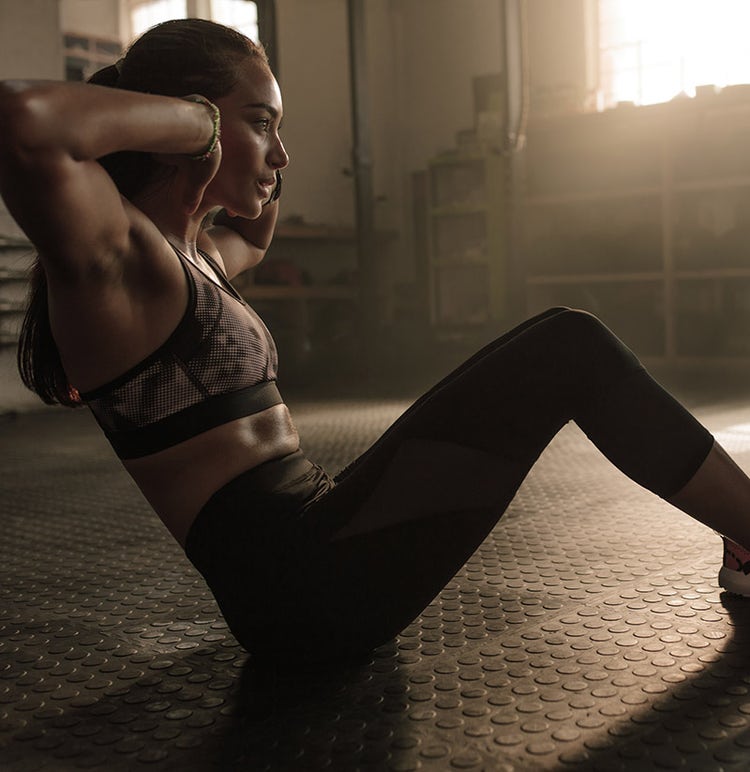A Deeper Look at Perfect Form

It’s been said that “practice makes perfect.” How do you become a better mover? A famous 1993 American Psychological Association review of movement performance said it takes approximately 10,000 hours of deliberate practice to become an expert.
Yikes! When it comes to movement, it sounds more daunting than 10,000 steps a day! Even if you’re a creature of habit, doing the same things over and over in the same way just sounds downright boring.
Life is random

Activities of daily living and sport are random. Unless you’re a robot, you really don’t perform the same movement pattern in the same way. Unloading a bag of groceries from your car varies based on the placement of the bag, the weight of the bag and the position you put your body in picking up the bag of groceries. A soccer goalie will never block a shot in the same way. If you vacuum your carpet, you will never vacuum the carpet the same way, even in trying to get the vacuum lines lined up!
The way you move in your everyday life is specificity in movement. It all depends on your environment and the stuff you need to do during the day.
Perfect form is necessary

If we move randomly in life, why do we train at the gym in such a rigid manner and stress perfect form? Gym settings are essential in maintaining strength in our activities of daily living. Squats and lunges help strengthen your legs. Cable pulls help strengthen your back and arms. If you’re a right-handed golfer, strengthening muscles on your left side is important for muscle balance.
Organized fitness sessions and paying attention to form is crucial to avoid injury. Perhaps you’ve heard that when you squat, your knees should not go past your toes. When you perform a deadlift, your back should remain flat. Working with constraints given particularly if you’re lifting heavy weight is essential. In this case, you may have to move like a robot.
In biomechanics, there is an inverse relationship between the amount of weight you lift and degrees of freedom. Degrees of freedom is exactly what it sounds like … freedom to move about! How many ways you can move a joint when holding weight?
In lifting weights close to your 1RM (or one-rep maximum, the heaviest weight you can lift and complete the movement), it’s crucial to pay attention to correct form because there is more stress on the muscles, bones and tissues. A study at California State University, Dominguez Hills, found most injuries in lifting weights happen in the shoulder, lower back, hip and knee. So if you’re lifting heavy weights, make sure you pay attention to correct form.
Submaximal loads are those lighter loads below your 1RM. Those are the loads we really carry in our activities of daily living—laundry basket, groceries, babies. Those are the loads you’re able to lift for six, eight, 10, 15, 20 or more repetitions. The lighter the load, the more you will be able to move with variability in different planes of motion like you do in your everyday life … hence, more degrees of freedom. Even with lighter loads, paying attention to form is also necessary particularly in certain regions of your body such as your knees and your neck area, called the cervical spine.
The dark side of “perfect” form

The dark side of repeating “perfect” form is repetitive stress injury. Unfortunately, this is what happens when you do things over and over in the same way. Pattern overload or repetitive stress injuries take place. Heavy back squats may cause compression in your spine. Playing tennis or golf may hurt your elbow—called tennis or golfer’s elbow. Shoulder pain may happen if you’ve been a swimmer for a very long time or do too many pull-ups.
Doing the same things you love to do over and over in the same way may hurt parts of your body, preventing you from moving well in your activities of daily living.
Mix it up, bridge the gap

Somehow you need to bridge the gap in your gym workouts with your activities of daily living. If you move like a robot in the gym, then you can really pull a muscle if you “move like Jagger” in your daily life.
- In lifting submaximal weight, you can change it up in moving patterns in your foot and ankle, hip and thoracic spine.
- Try shifting patterns from side to side or forward and back.
- Although a curtsy lunge may feel silly and look cute, it is a terrific way to shift your weight, get your ankle mobile and rotate through your hips.
- Side lunges, rotation in upper and lower body, using a single leg or single arm are other ways we actually move in life.
Using speed and momentum in lifting lighter weights is also part of real-life movement. Have you ever had to run with your carry-on luggage to make a flight? Speed helps in mixing up the way you load your joints, fascia and muscle in a productive way so you don’t injure yourself. Mixing up the way you move with load and your body weight helps you become a better mover.
There is a difference in good movement and good form. Both are essential in health to keep moving in life. Yes, practice, practice, practice! Practice moving every day in different ways, different speeds and different angles to move well.
Video credit: Sol Stock, Getty Images
Photo credit: Jacob Lund, Adobe Stock; RyanJLane, Getty Images; Victor Freitas, Unsplash; rukawajung, Adobe Stock; asiseeit, Getty Images